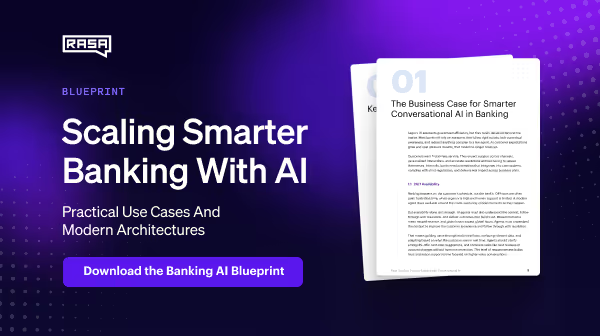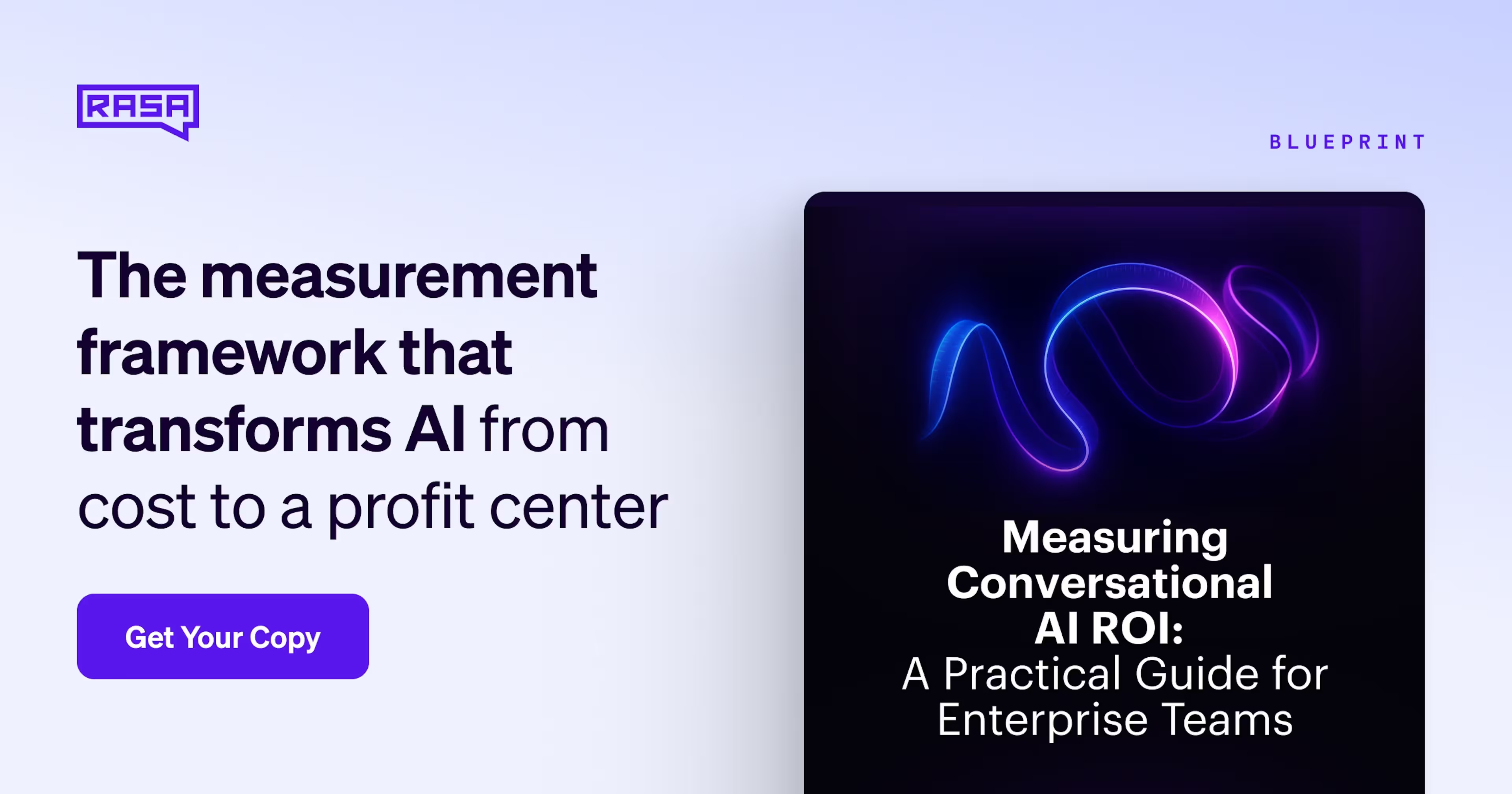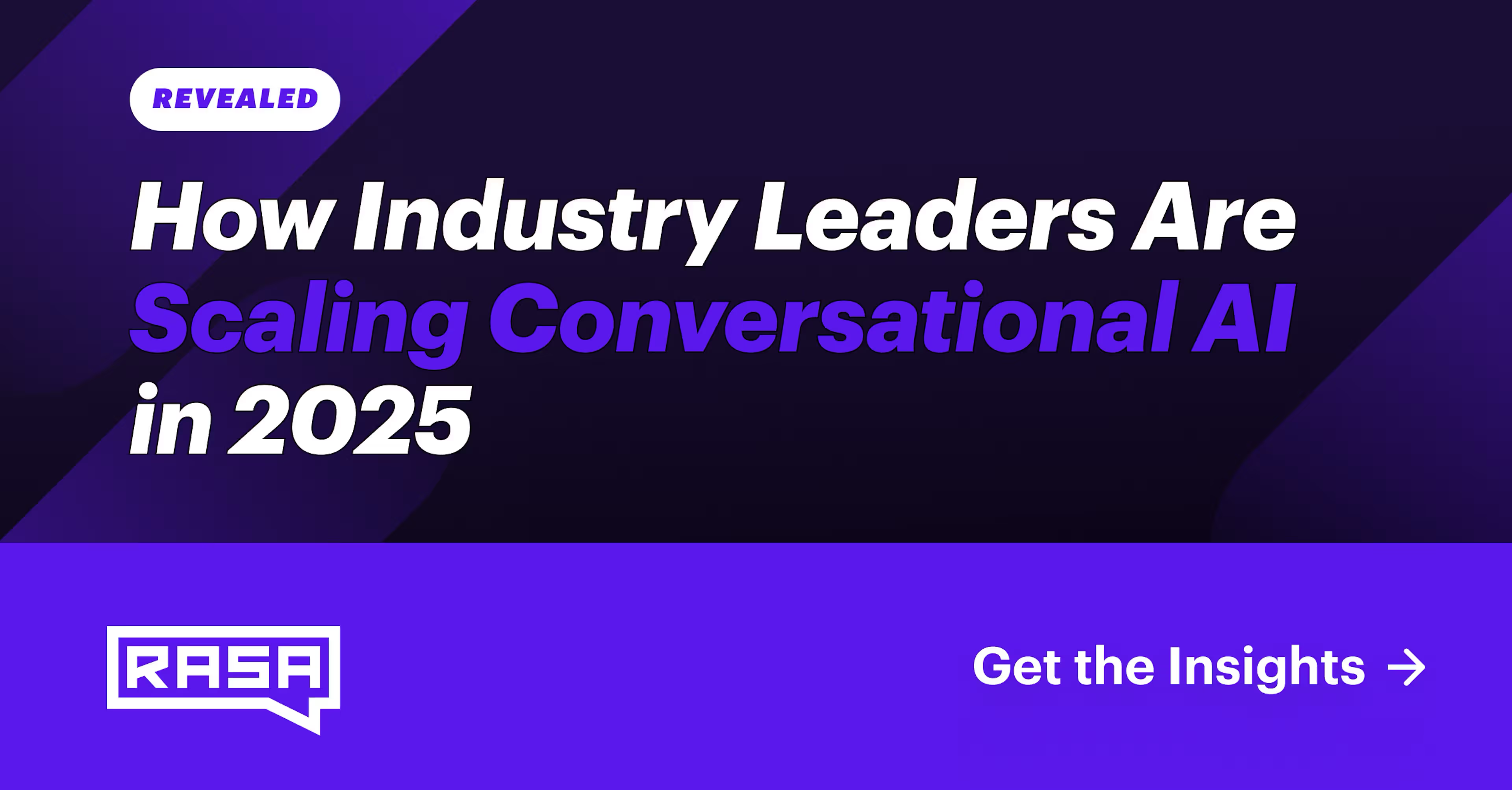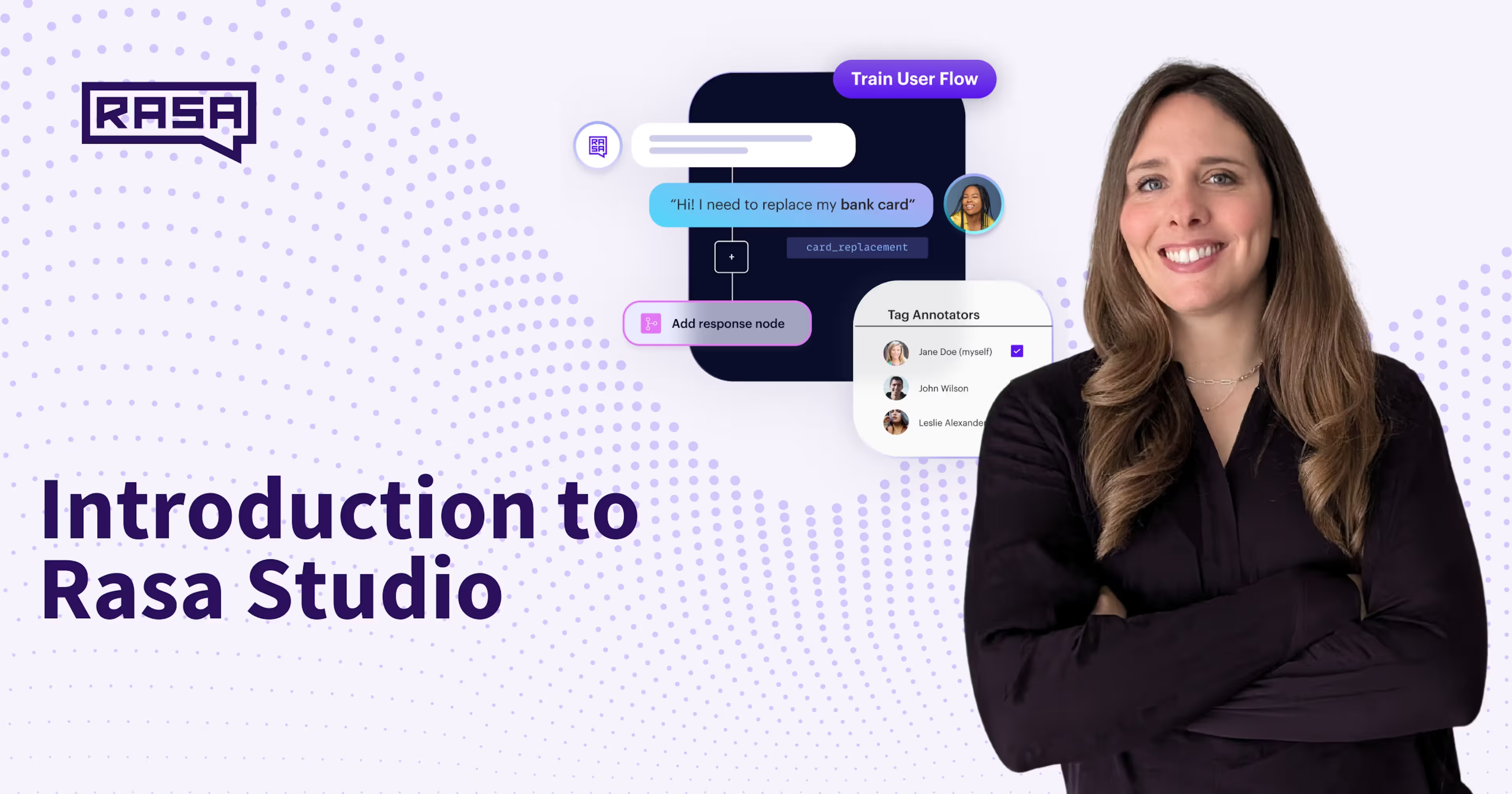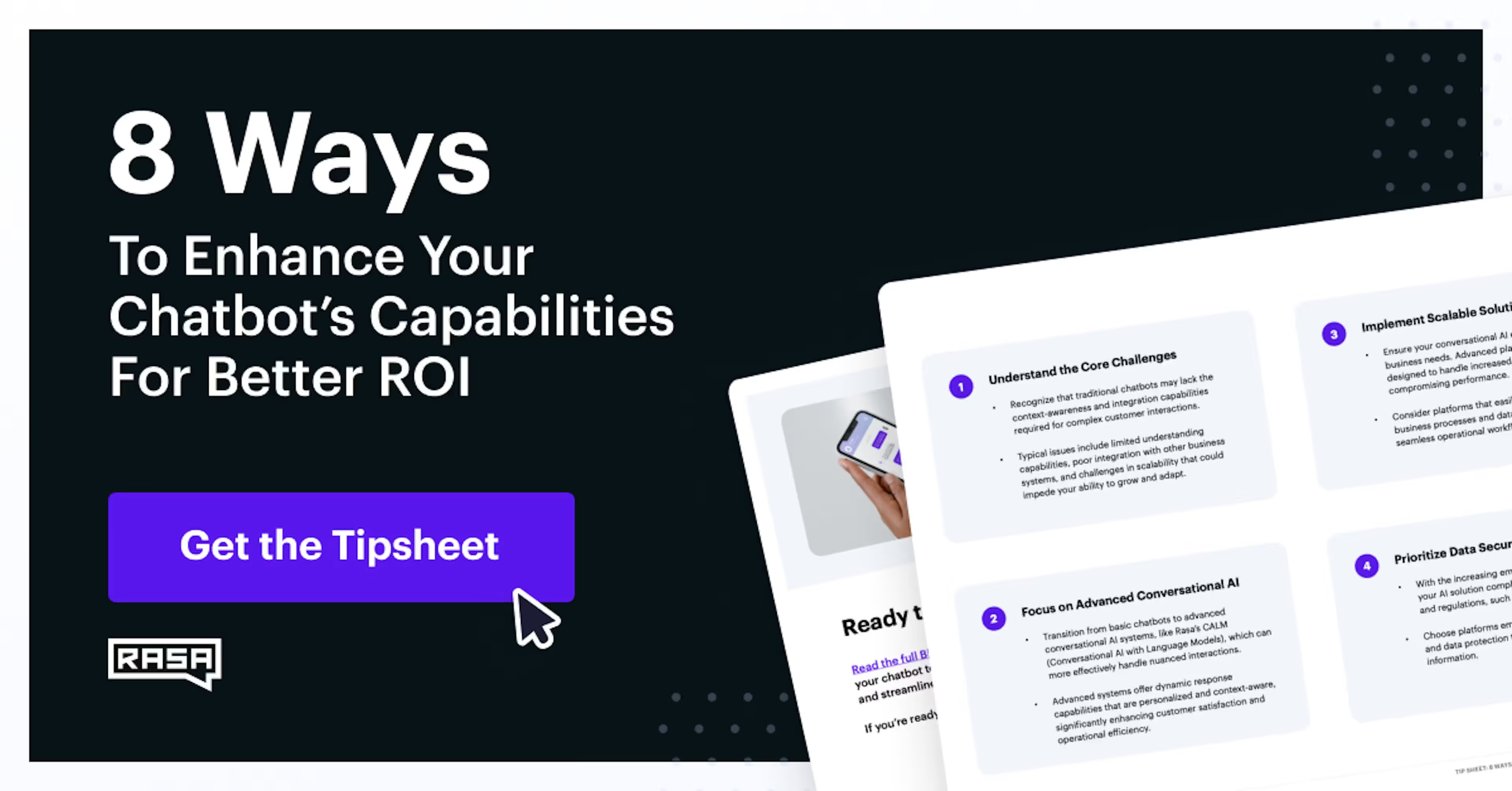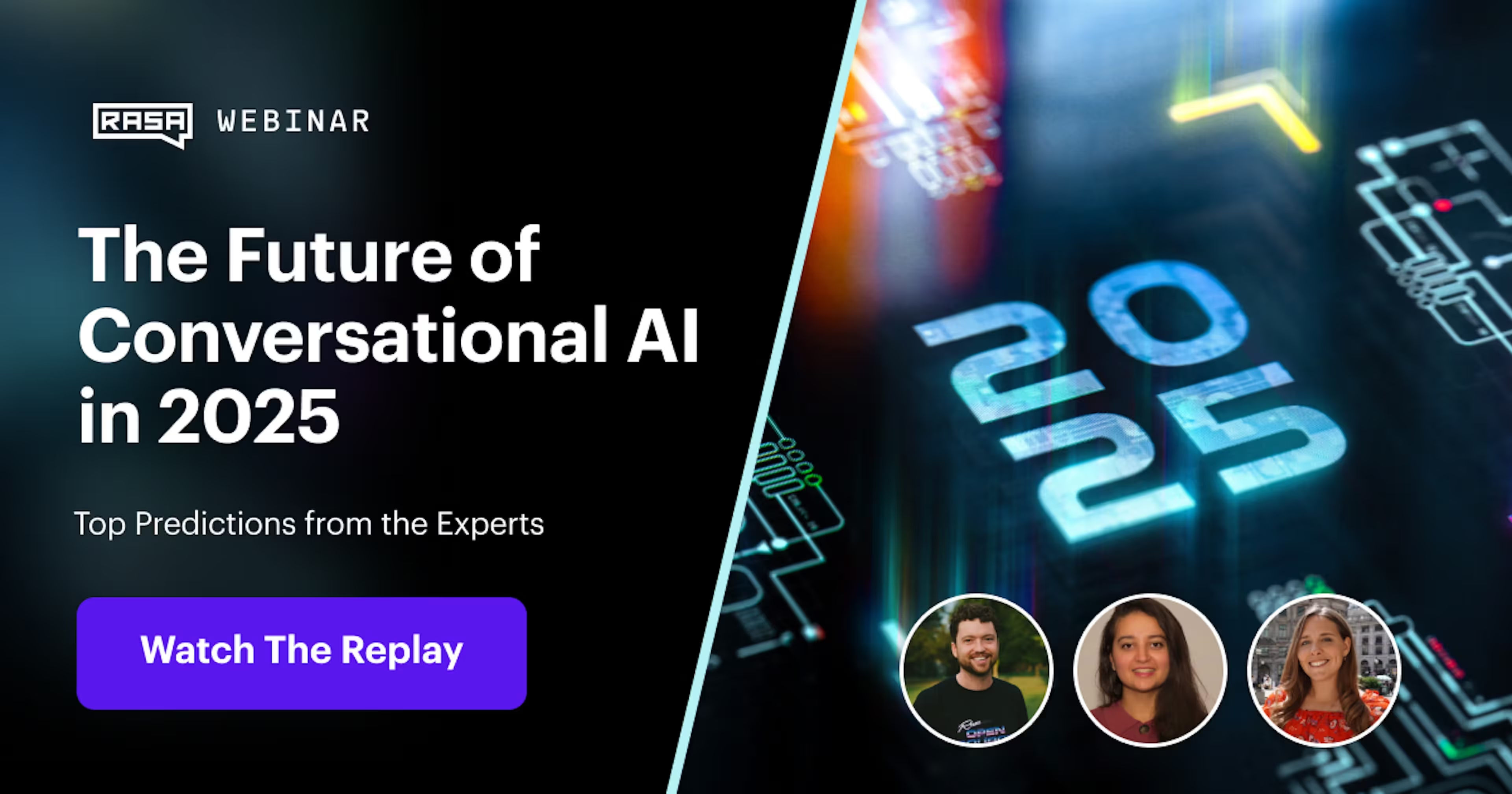Resources


Voice AI Unlocked: The Tech Powering Next-Gen Enterprise Support
Join Rasa Staff Resident AI Engineer Souvik Ghosh and Cartesia's CEO Karan Goel for an exclusive deep-dive into the future of enterprise Voice AI. Watch real-time demonstrations of breakthrough voice technology that's transforming customer experience in banking and telecommunications.
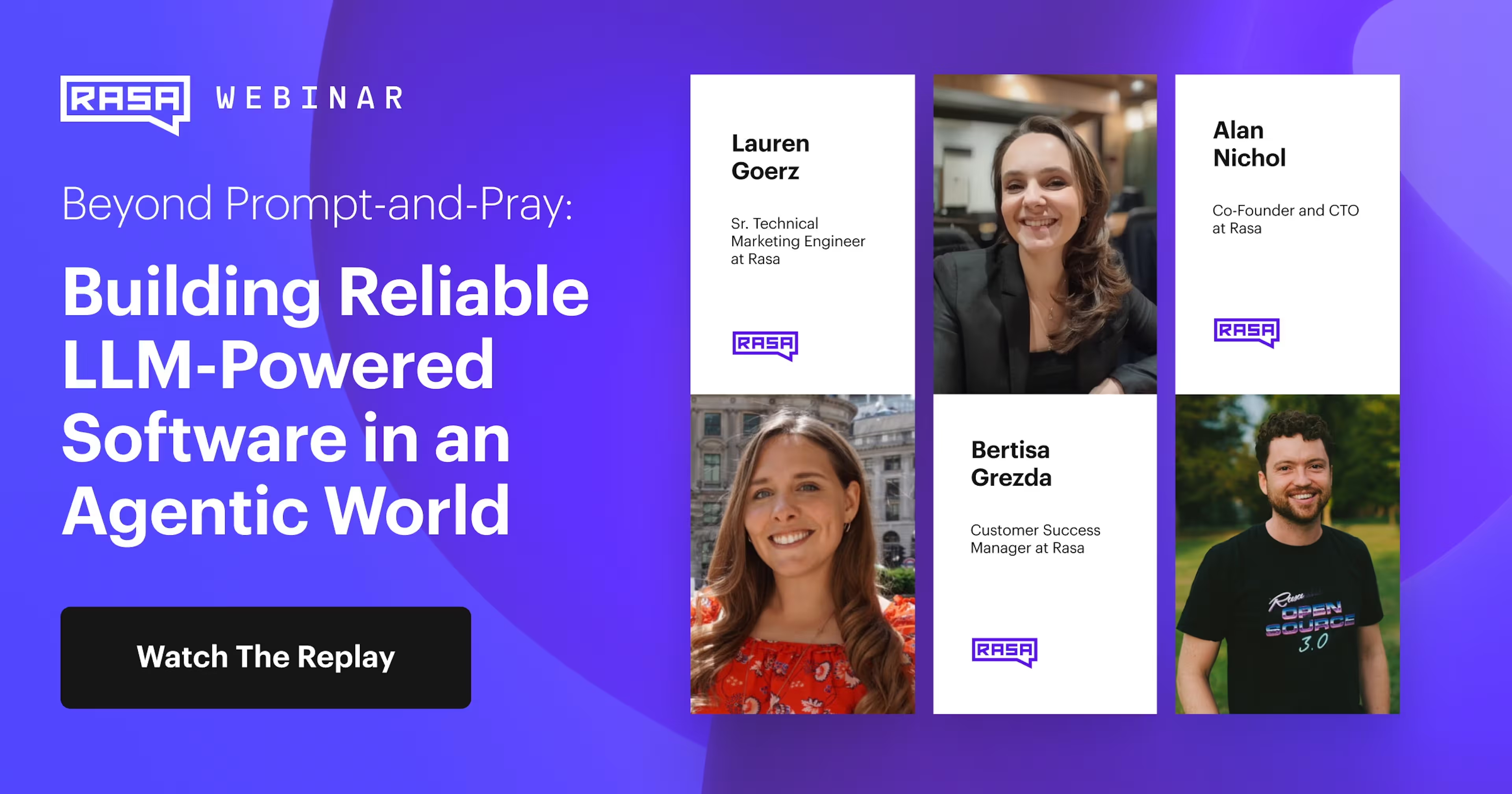
Beyond Prompt-and-Pray: Building Reliable LLM-Powered Software in an Agentic World
Join Alan Nichol, Rasa Co-Founder and CTO, Lauren Goerz, Sr. Technical Marketing Engineer, and Bertisa Grezda, Customer Success Manager, to learn how leading companies are moving beyond the risky "prompt-and-pray" methodology to develop reliable, secure, and scalable AI systems.

Simplifying Citizen Access to Government Services with Rasa
eUprava, Serbia’s national e-Government platform, provides citizens nationwide with digital access to dozens of government services. As demand for faster, easier service delivery grows, eUprava introduced conversational AI to simplify how citizens locate and start online government processes. The chatbot helps reduce complexity for users while keeping government services accessible across a broad range of digital interactions.

[BLUEPRINT] How to Implement Voice AI That Delivers Real Results
This guide is built for teams who need voice AI that performs, not just sounds good. If you're scaling automation and want something that holds up under pressure while cutting LLM costs by 80% and reducing response times by 8x, we think you’ll find this helpful.
AI that adapts to your business, not the other way around
Build your next AI
agent with Rasa
Power every conversation with enterprise-grade tools that keep your teams in control.

